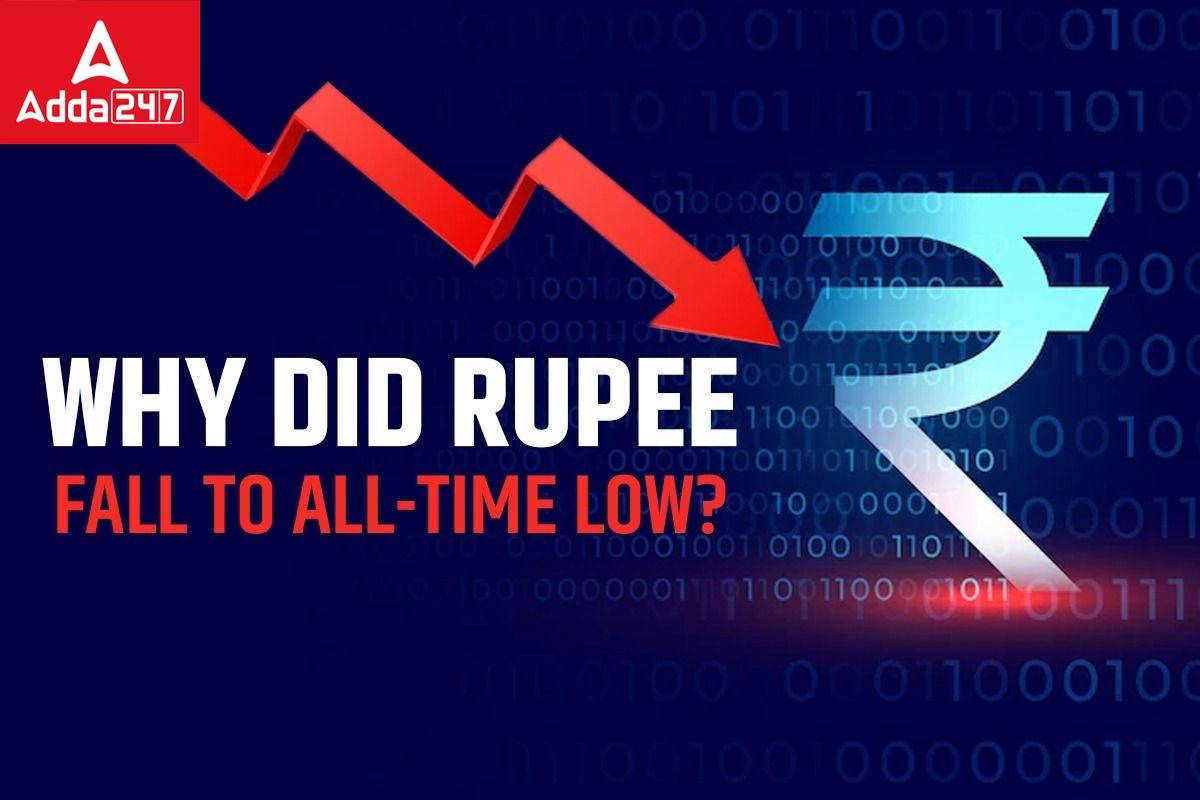The rupee fell to an all-time low against the US dollar in early trade. The rupee declined for a third straight quarter versus the US dollar as concerns over sustained inflation and continuing foreign fund outflows weighed. At the interbank foreign exchange, the rupee opened at 80.10 against the dollar, then lost ground to quote at 80.15, registering a fall of 31 paise from the last close. Forex traders said the dollar index gained after Federal Reserve Chair Jerome Powell adopted a hawkish tone to battling inflation.
Bank Maha Pack includes Live Batches, Test Series, Video Lectures & eBooks
What The Economists Said:
According to Anil Kumar Bhansali, Head of Treasury, Finrex Treasury Advisors, the rupee opened on a weak note after a hawkish Powell kept U.S. rate hikes in prominence until inflation falls to 2%. “With 80 being allowed to be crossed over by RBI, its actions will be watched closely by traders. The next important events are PMI and NFPR of the US which will give an indication as to how the economy and labour markets are behaving,” Mr. Bhansali said. Global oil benchmark Brent crude futures advanced 0.86% to $101.86 per barrel. On the domestic equity market front, the 30-share Sensex was trading 966.68 points or 1.64% lower at 57,867.19, while the broader NSE Nifty fell 283.90 points or 1.62% to 17,275.00. Foreign institutional investors were net sellers in the capital market on Friday as they offloaded shares worth ₹51.12 crore, as per stock exchange data.
Reasons For Rupee Depreciation:
Global factors such as the Russia-Ukraine conflict, soaring crude oil prices and tightening of global financial conditions are the major reasons for the weakening of the Indian Rupee against the US dollar. The Reserve Bank of India (RBI) has been intervening in both the spot and forwards markets to slow the rupee’s fall and has taken several measures in recent weeks to boost foreign fund inflows.
What does a weaker rupee mean:
- Consistent depreciation in the value of the rupee has been weighing on the domestic stocks. A depreciation in the rupee is typically negative for foreign investors.
- The biggest impact of a weakening rupee is on inflation. Consumers will have to shell out much more for products which are imported.
- With the rupee witnessing a record fall against the US dollar, those remitting money from abroad to India will have to spend more.
- A weakening rupee means higher fuel and energy price. India imports more than 80% of its crude oil. That will result in higher fuel and energy prices for consumers in India as oil companies will pass on the additional exchange rate burden.
- A weakening currency means that now you would have to pay more for the same foreign education and international travel than you did before.
- As payments for imports are made in dollar terms, a weaker Rupee would drive up the price of importing goods.
Find More News on Economy Here



 Indian Olympic Medal Winners List Till N...
Indian Olympic Medal Winners List Till N...
 Who is the Inventor of the Gramophone?
Who is the Inventor of the Gramophone?
 HS Dhaliwal Appointed New DGP Of Andaman...
HS Dhaliwal Appointed New DGP Of Andaman...
